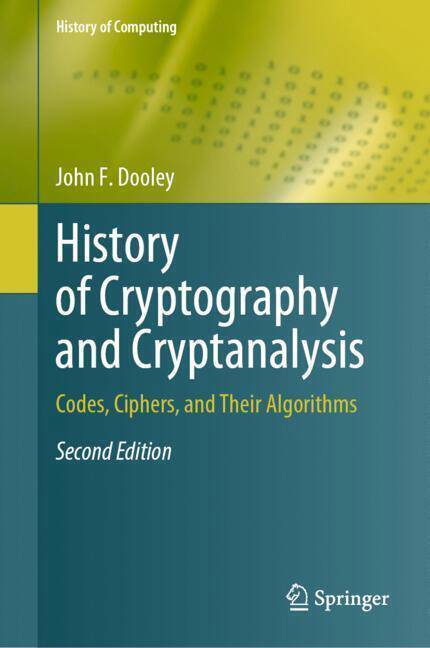
- Retrait gratuit dans votre magasin Club
- 7.000.000 titres dans notre catalogue
- Payer en toute sécurité
- Toujours un magasin près de chez vous
- Retrait gratuit dans votre magasin Club
- 7.000.000 titres dans notre catalogue
- Payer en toute sécurité
- Toujours un magasin près de chez vous
Description
This textbook presents a fascinating review of cryptography and cryptanalysis, from the earliest known cryptographic systems of 2,500 years ago up to modern computer-based systems.
The text relates the earliest use of the monoalphabetic cipher in the ancient world, the development of the "unbreakable" Vigenère cipher, and an account of how cryptology entered the arsenal of military intelligence during the American Revolutionary War. Moving on to the American Civil War, the book explains the solution of the Vigenère ciphers used by the Confederates and the use of telegraph codes, before investigating the development of cipher machines throughout World War I and II, including development of the first digital computer, Colossus. The exposition then explores cryptology in the computer age, from public-key cryptography and web security to criminal cyber-attacks and cyber-warfare. The role of cryptography in the Internet of Things is also discussed, along with the potential impact of quantum computing.
Topics and features:
- Presents a history of cryptology from ancient Rome to the present day, with a focus on cryptology in the 20th and 21st centuries
- Provides engaging examples illustrating use of cryptographic algorithms in different historical periods
- Reviews algorithms and devices used to create secret messages, and the various methods for breaking such messages
- Describes notable contributions to cryptology by Herbert Yardley, William and Elizebeth Smith Friedman, Lester Hill, Agnes Meyer Driscoll, and Claude Shannon
- Examines unsolved mysteries in cryptology, such as the Voynich Manuscript, the Beale Ciphers, the Kryptos sculpture, and the Zodiac killer ciphers
This engaging work is ideal as both a primary text for courses on the history of cryptology, and as a supplementary text for advanced undergraduate courses on cryptology and computer security. No prior background in mathematics is assumed, beyond what would be encountered in an introductory course on discrete mathematics.
Spécifications
Parties prenantes
- Auteur(s) :
- Editeur:
Contenu
- Nombre de pages :
- 348
- Langue:
- Anglais
- Collection :
Caractéristiques
- EAN:
- 9783031674846
- Date de parution :
- 26-10-24
- Format:
- Livre relié
- Format numérique:
- Genaaid
- Dimensions :
- 155 mm x 235 mm
- Poids :
- 810 g







